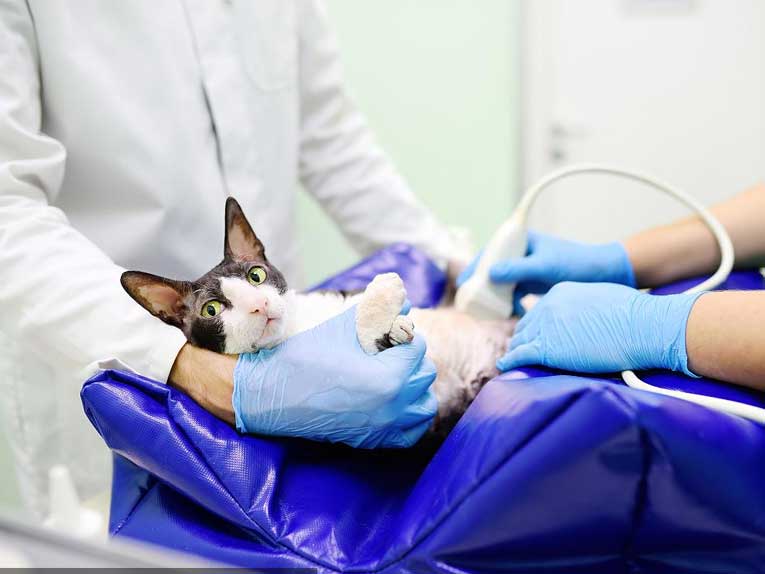Why is an ultrasound needed for cats?
Veterinarians can use ultrasound to examine a cat’s internal organs, such as the heart, liver, kidneys, bladder and reproductive organs, without invasive procedures. It helps diagnose a variety of conditions including kidney disease, urinary tract problems, liver disease, heart disease and reproductive problems. Cat ultrasound provides detailed, real-time images of internal structures to help veterinarians identify abnormalities, tumours, cysts, stones or other problems within organs. Veterinary ultrasound is most commonly used to monitor pregnancy in cats. It can confirm pregnancy, estimate the number of kittens and assess the health of the developing foetus. Ultrasound is an important tool in feline veterinary care, helping veterinarians to accurately diagnose a wide range of health problems in cats and develop appropriate treatment plans.
Type of cat ultrasound machine chosen?
The type of pet ultrasound machine used when performing ultrasound in cats can be selected based on the specific examination and the required image resolution. The following are some common types of ultrasound equipment and the examination items they are suitable for:
Portable cat ultrasound machine: Portable ultrasound equipment is usually suitable for general clinical examinations and mobile veterinary services. They are portable and suitable for quick ultrasound examinations such as pregnancy tests, initial examinations of the liver, spleen, kidneys, bladder and heart.
Benchtop cat ultrasound devices: Benchtop ultrasound devices usually have higher image resolution and more functional options. They are suitable for more complex examinations such as deep tissue examination, cardiac ultrasound, detailed examination of abdominal organs and haemodynamic assessment.
Colour Doppler ultrasound devices: These devices assess the speed and direction of blood flow and are therefore suitable for the examination of cardiac and vascular problems such as heart valve disease and thrombosis.
3D/4D ultrasound devices: These devices create three- or four-dimensional images and are suitable for more detailed anatomical and structural analyses, useful for complex cases or surgical planning.
Cat ultrasound procedures
Cat ultrasound is a non-invasive medical diagnostic method used to visualise and evaluate the internal organs and tissues of cats. The following are general cat ultrasound procedures:
It is important to follow any advice and instructions given by your vet before the procedure is carried out to ensure that the procedure can be carried out smoothly and with the best possible outcome. This may include asking your cat to refrain from eating or drinking for a period of several hours prior to the procedure.
Prior to the ultrasound, it is often necessary to shave part of the cat’s abdomen or other areas to be examined so that the ultrasound probe can better access the skin and produce a clear image.
The cat usually needs to be in a flat or reclined position so that the veterinarian can access the desired area.
A layer of clear coupling gel is applied to the cat’s skin to help transmit the ultrasound waves and reduce interference from air. The gel also helps to reduce friction.
To perform an ultrasound on a cat, a 5.0 MHZ microconvex probe or a 3.5 MHZ convex array probe is usually used to perform the relevant examination on the cat;
The veterinarian will record the images and measurements for subsequent analysis and comparison. Based on the results of the ultrasound images, the veterinarian can make a diagnosis and discuss treatment options.
Ultrasound is often a quick, non-invasive diagnostic method that can be used to diagnose many different diseases and conditions, including kidney disease, liver problems, heart disease, pregnancy and more. Diagnostic results can provide your veterinarian with important information to help plan treatment. If your cat requires an ultrasound, it is important to follow your veterinarian’s advice and instructions.
Post time: Oct-10-2023




